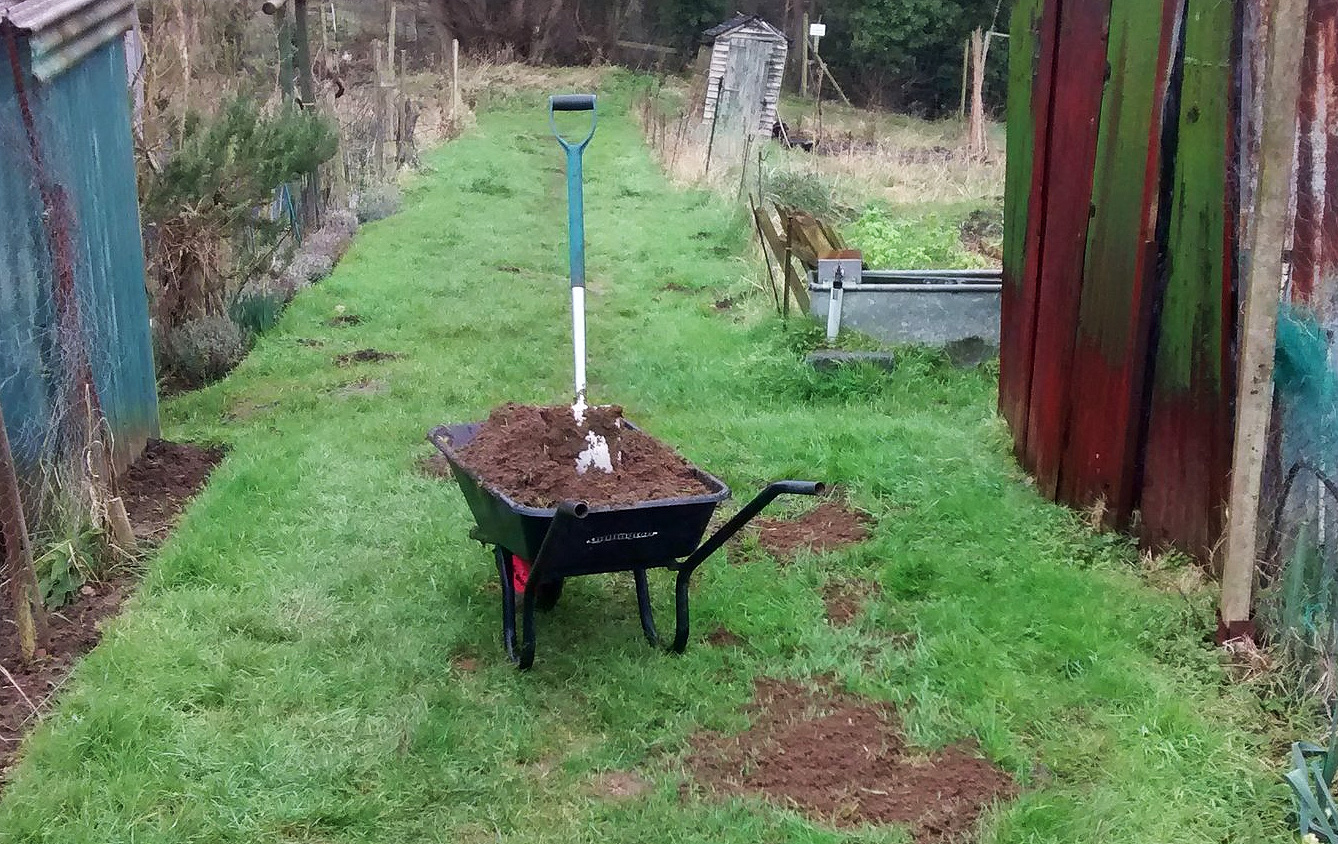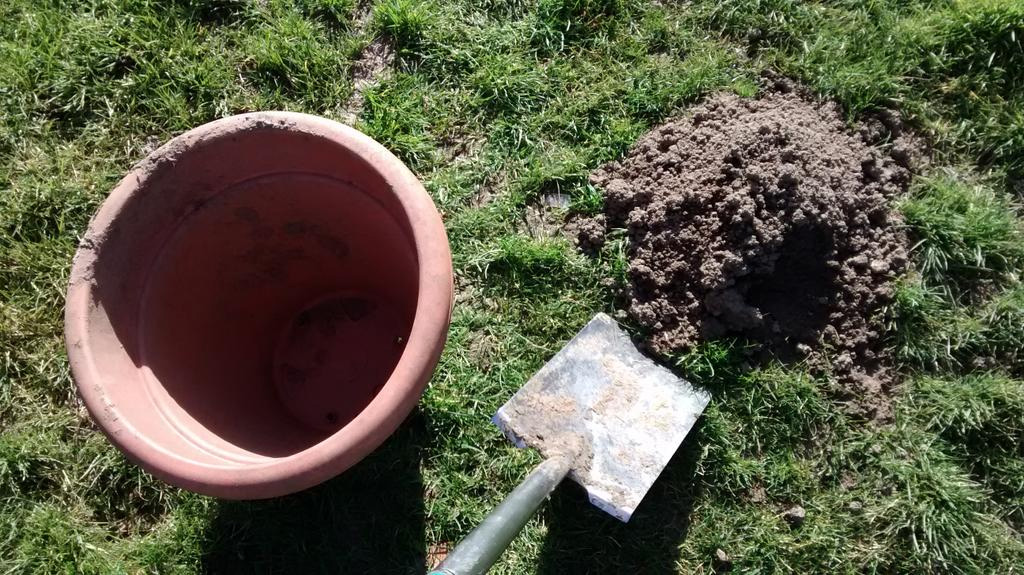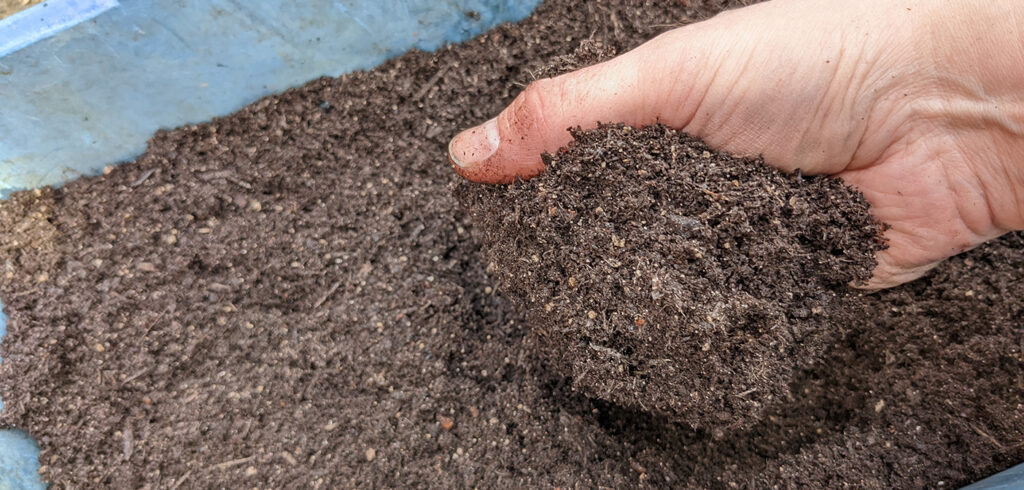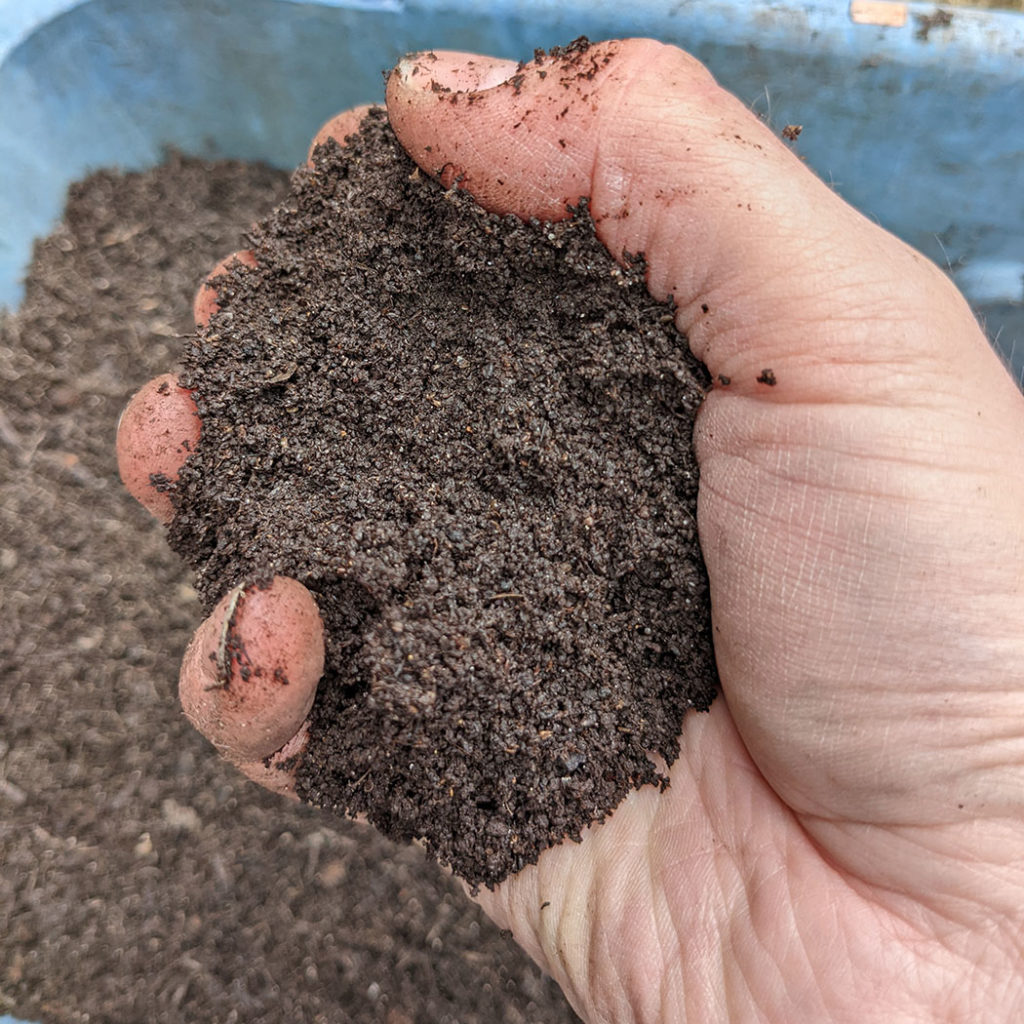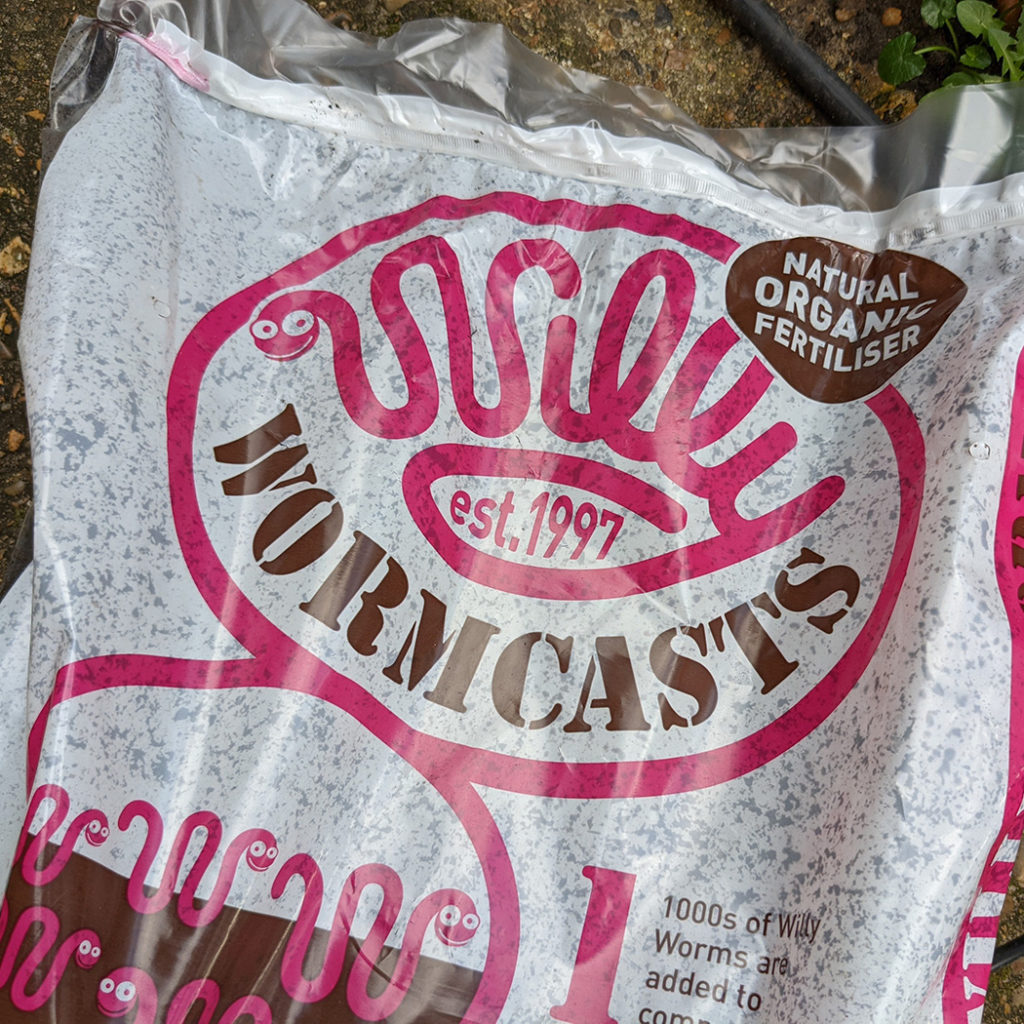As well as making my own compost, I buy all kinds of different peat-free composts throughout the growing season for use with planting out in the garden or allotment. For indoor seed sowing I find some extra steps are needed to improve germination and plant health. My objective is to achieve a fine granular nutrient-rich compost, free of sizeable lumps which might block the path of a small seedling or its hungry roots.
Sieving is a necessity
As the range of peat free composts available to us increases, I do find that their more natural composition is often lumpy and twiggy straight out of the bag. This is all well and good for a potato trench or pumpkin planting hole but not very helpful for the indoor sowing of tiny delicate seeds like sweet peppers, tomatoes and chillies.
There are one or two ‘seed compost’ specific peat-free offerings on the market but I have had issues with these for use indoors – they seem to come with their own fly eggs, waiting to hatch out as soon as they hit the warmth of a propagator. This makes for a very angry wife. Consequently I prefer to use a regular peat-free potting compost and sieve it with my garden ‘riddle’ (don’t use a kitchen sieve… that makes for an even angrier wife). This sieving process results in a much better base for my indoor seed compost.
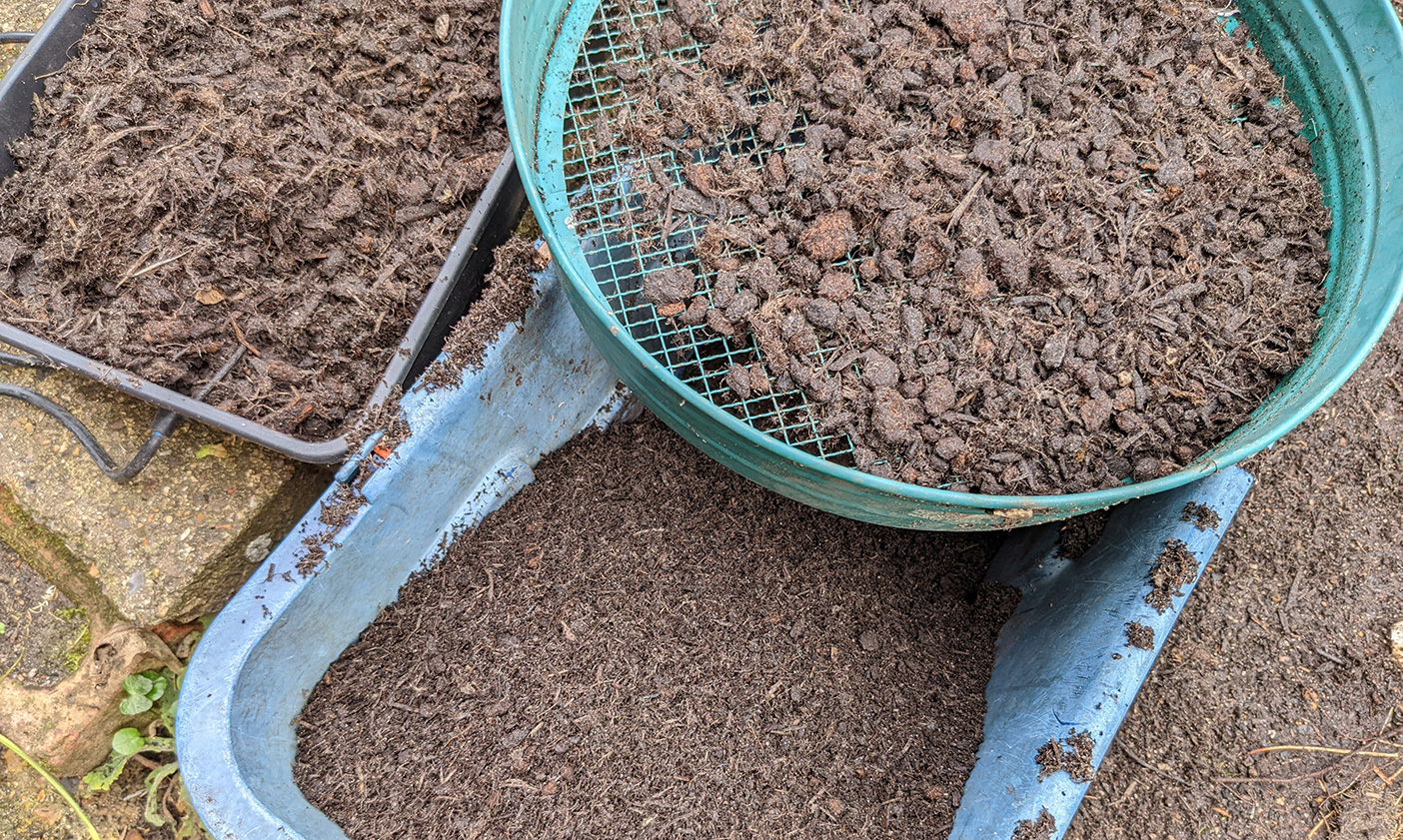
Adding nutrients and granularity – worm casts
You’ve probably come across a little pile of worm casts on the top of a lawn, it’s essentially worm poo – 100% organic humus containing nutrients and microbes. With an estimated NPK (Nitrogen, Phosphate, Potassium) value of 5 / 5 / 3 it’s extremely good for plants, I am always amazed to find people on gardening forums asking “How can I get rid of worm casts on my lawn?” when their presence indicates a healthy soil ecosystem exists below ground, be glad of them! I like to add worm casts to my freshly sieved seed compost, at a ratio of about 20%. This increases the granularity of the compost and provides those extra nutrients to seedlings.
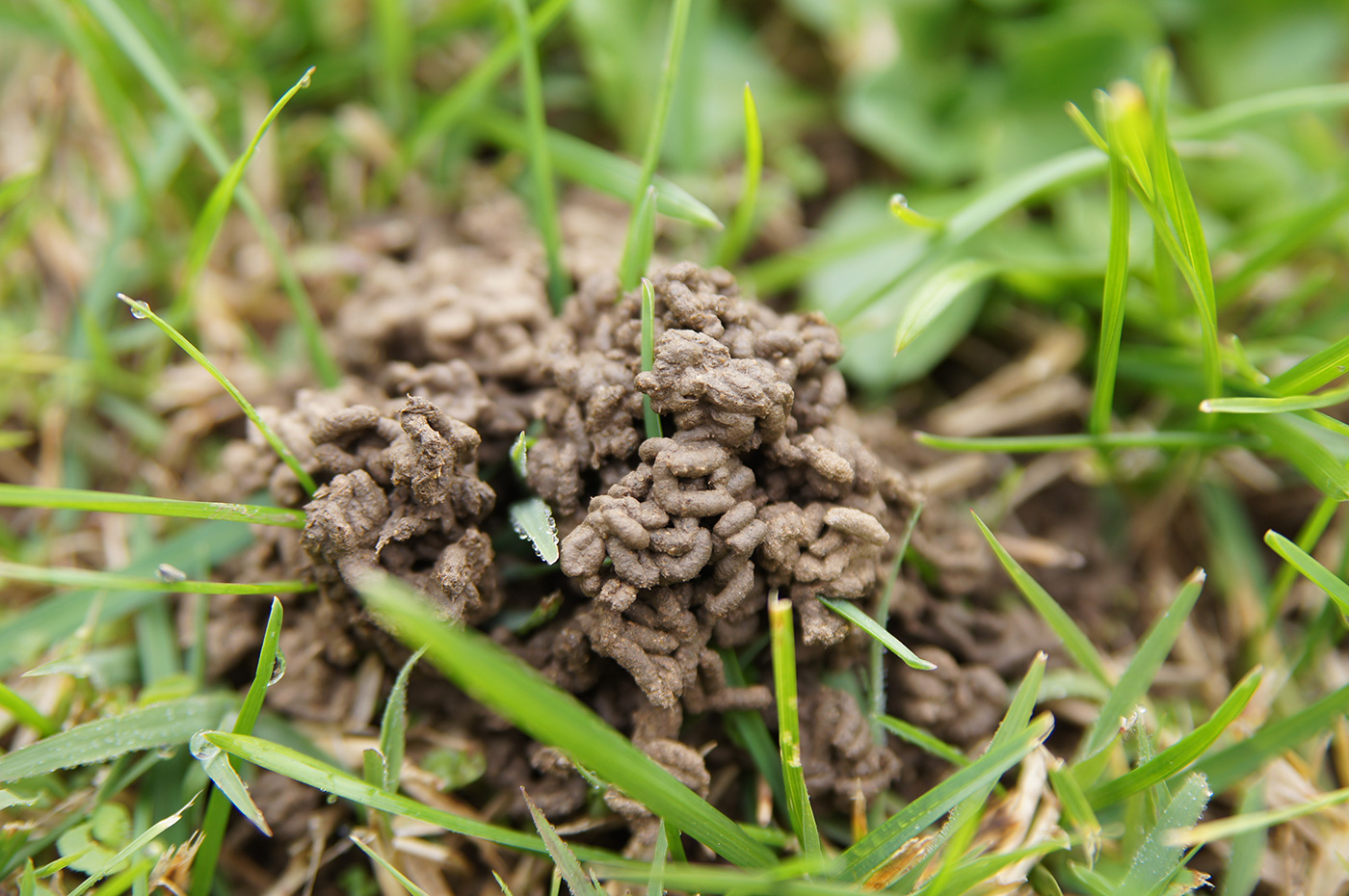
Obviously it would take a long time to collect worm casts by hand from a lawn, luckily they can be ordered online. I purchase mine from ‘Willy Worms‘ – a Yorkshire-based company specialising in the production of fishing bait. With all the worms they produce there is no shortage of worm casts available, consequently they bag them up and sell them to us gardeners. It’s very fine stuff, their worm casts are screened twice, once through a 5mm trommel and then through a 3mm trommel. You can buy 20 litres for £9.99 + postage (or pay twice the price on Amazon), it’s a small bag but you’re going to dilute it at 20% with your main compost anyway so it’ll be good for 100 litres of seed compost.
Once the worm casts are well mixed with my sieved peat-free potting compost it’s ready for use in seed trays and propagators. The consistency will be perfect and you’ll never ever say to yourself “this stuff isn’t as good as peat-based compost” again.
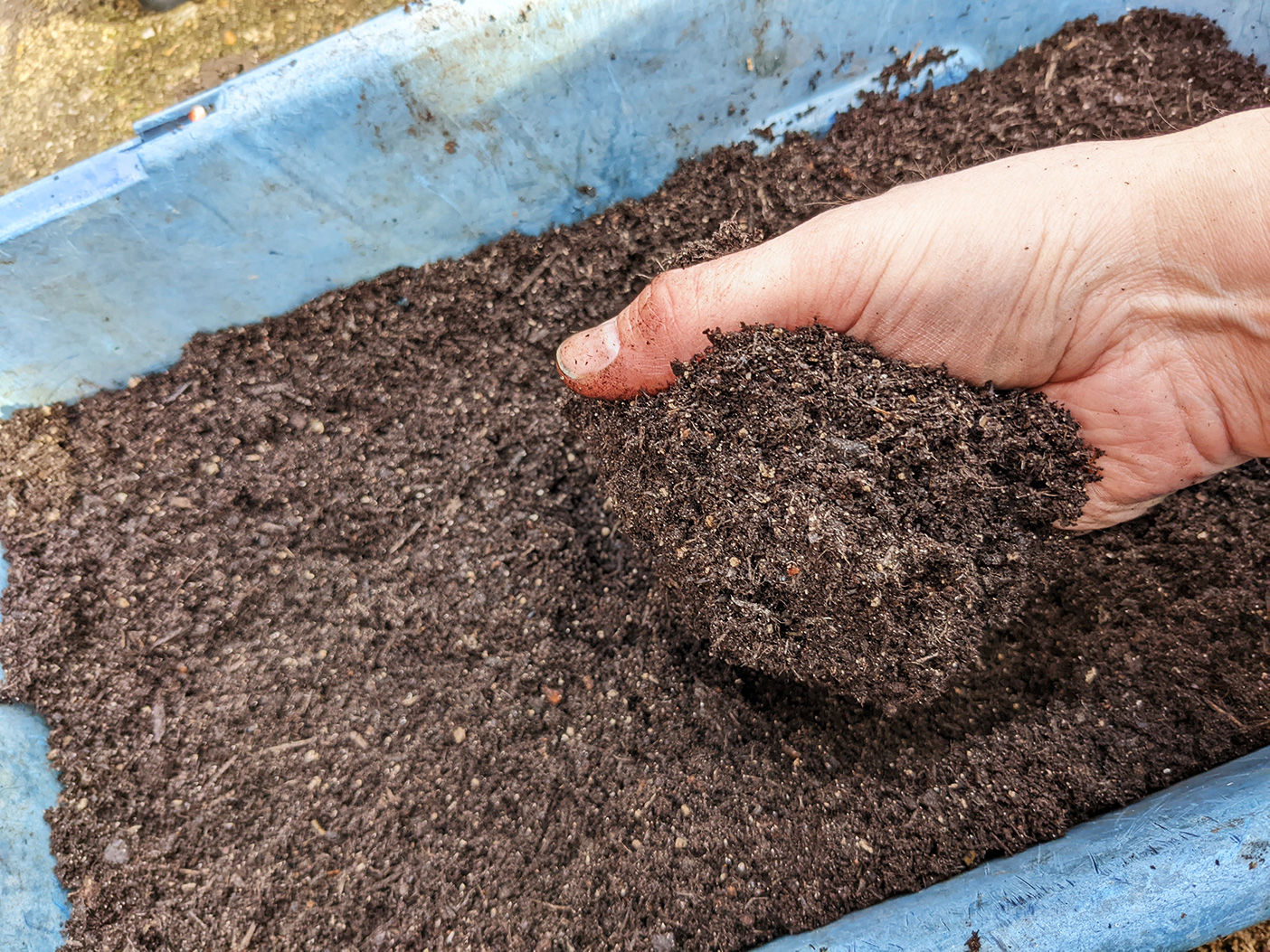
Making compost out of mole hills
If you can’t access worm casts or don’t want to spend out on them, look out for mole hills. In the winter months mole hills are much more prevalent because moles dig deeper to escape the cold temperatures. What they push up is generally very granular soil and, with a diet rich in earth worms, you can be sure that they are pushing up a fair amount of worm casts as they snack on them. At one of our local allotment sites mole hills are very easy to find, I’ve even been known to fill the odd wheelbarrow with them to cover a raised bed.
